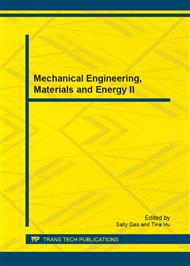p.28
p.33
p.37
p.41
p.47
p.51
p.55
p.59
p.65
Steganographic Method with High Visual Concealment in Wavelet Domain
Abstract:
In this paper we propose a new steganographic method, which based on wet paper codes and wavelet transformation. The method is designed to embed secret messages in images' wavelet coefficients and depends on images' texture characters in local neighborhood. The receivers can extract secret bits from carrier images only by some matrix multiplications without knowing the formulas written by senders, which further improves steganographic security and minimizes the impact of embedding changes. The experimental results show that our proposed method has good robust and visual concealment performance and proves out it's a practical steganographic algorithm.
Info:
Periodical:
Pages:
47-50
Citation:
Online since:
January 2013
Authors:
Price:
Сopyright:
© 2013 Trans Tech Publications Ltd. All Rights Reserved
Share:
Citation:


